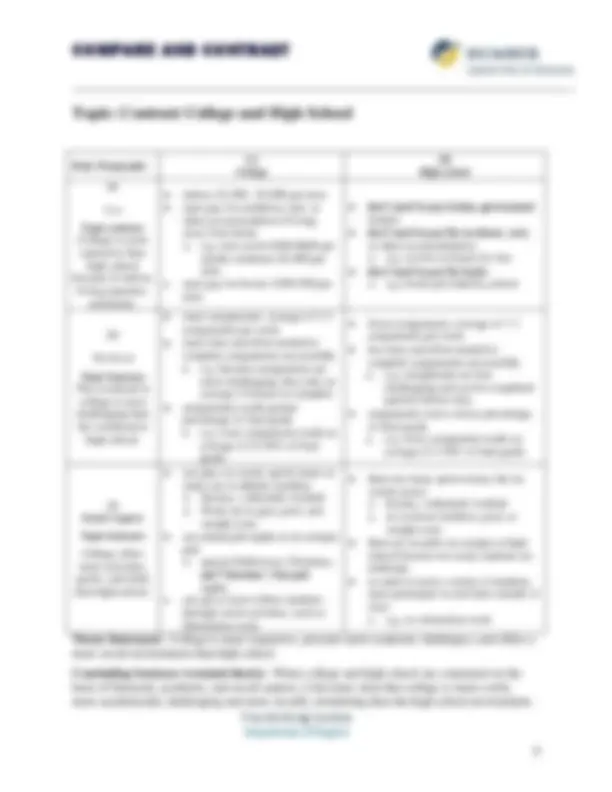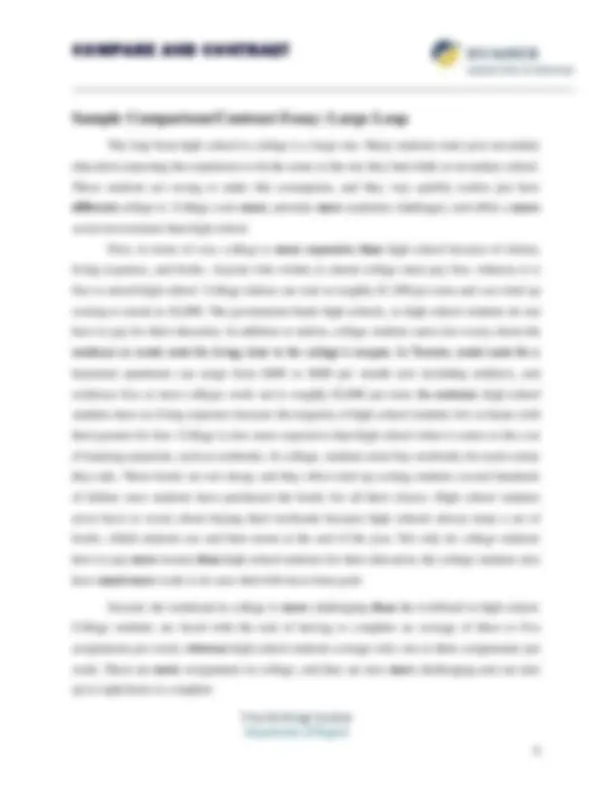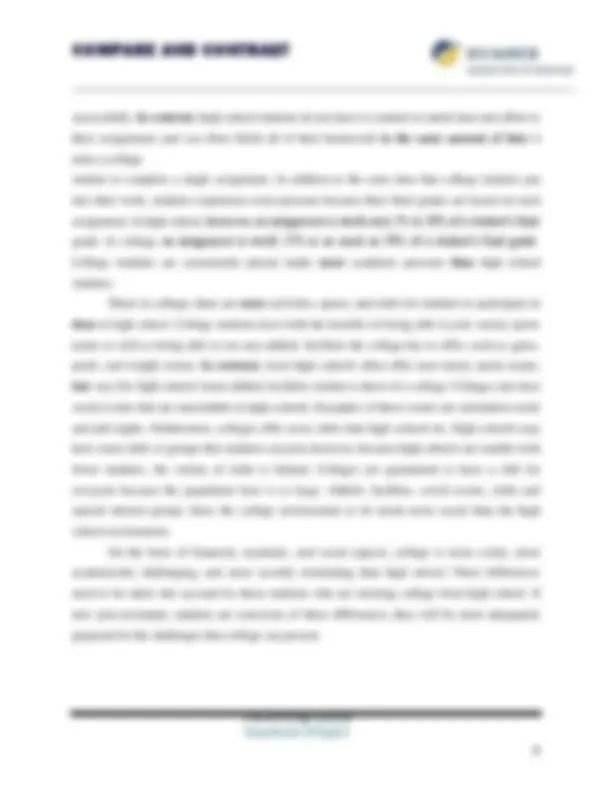





Study with the several resources on Docsity

Earn points by helping other students or get them with a premium plan


Prepare for your exams
Study with the several resources on Docsity

Earn points to download
Earn points by helping other students or get them with a premium plan
Community
Ask the community for help and clear up your study doubts
Discover the best universities in your country according to Docsity users
Free resources
Download our free guides on studying techniques, anxiety management strategies, and thesis advice from Docsity tutors
Thesis Statement: College is more expensive, presents more academic challenges, and offers a more social environment than high school. Concluding Sentence ( ...
Typology: Slides
1 / 6

This page cannot be seen from the preview
Don't miss anything!




Department of English
Emphasizes the similarities between two things, ideas, concepts, or points of view.
Emphasizes the differences between two things, ideas, concepts, or points of view
(also called the slice or alternating method) compares the items one point at a time. The topic sentence focuses on the point being used as the basis of comparison rather than the item.
Department of English
Example If you were to write a comparison of college and high school, you might decide on the following three points: cost of attending high school and college workload in high school and college social aspects of high school and college Using the point-by-point method helps your readers see the points more clearly. You would then need to blueprint five paragraphs for your essay
Introduction and Thesis items to be compared, reason for comparison, and main points
Cost of attending high school and college
Workload in high school and college
Social aspects of high school and college
Conclusion should summarize or restate the main points and may indicate a preference for one of the two items being compared
Body Paragraphs
Department of English
Sample Comparison/Contrast Essay: Large Leap
The leap from high school to college is a large one. Many students enter post-secondary education expecting the experience to be the same as the one they had while at secondary school. These students are wrong to make this assumption, and they very quickly realize just how different college is. College costs more , presents more academic challenges, and offers a more social environment than high school. First, in terms of cost, college is more expensive than high school because of tuition, living expenses, and books. Anyone who wishes to attend college must pay fees, whereas it is free to attend high school. College tuition can start at roughly $1,500 per term and can wind up costing as much as $2,000. The government funds high schools, so high school students do not have to pay for their education. In addition to tuition, college students must also worry about the residence or rental costs for living close to the college’s campus. In Toronto, rental costs for a basement apartment can range from $400 to $600 per month (not including utilities), and residence fees at most colleges work out to roughly $2,000 per term. In contrast , high school students have no living expenses because the majority of high school students live at home with their parents for free. College is also more expensive than high school when it comes to the cost of learning materials, such as textbooks. In college, students must buy textbooks for each course they take. These books are not cheap, and they often wind up costing students several hundreds of dollars once students have purchased the books for all their classes. High school students never have to worry about buying their textbooks because high schools always keep a set of books, which students use and then return at the end of the year. Not only do college students have to pay more money than high school students for their education, the college students also have much more work to do once their bills have been paid.
Second, the workload in college is more challenging than the workload in high school. College students are faced with the task of having to complete an average of three to five assignments per week, whereas high school students average only one to three assignments per week. There are more assignments in college, and they are also more challenging and can take up to eight hours to complete
Department of English
successfully. In contrast , high school students do not have to commit as much time and effort to their assignments and can often finish all of their homework in the same amount of time it takes a college student to complete a single assignment. In addition to the extra time that college students put into their work, students experience extra pressure because their final grades are based on each assignment. In high school, however , an assignment is worth only 5% to 20% of a student’s final grade. In college, an assignment is worth 25% or as much as 50% of a student’s final grade. College students are consistently placed under more academic pressure than high school students. Third, in college, there are more activities, sports, and clubs for students to participate in than in high school. College students have both the benefits of being able to join varsity sports teams as well as being able to use any athletic facilities the college has to offer, such as gyms, pools, and weight rooms. In contrast , most high schools often offer non-varsity sports teams, but very few high schools boast athletic facilities similar to those of a college. Colleges also host social events that are unavailable in high schools. Examples of these events are orientation week and pub nights. Furthermore, colleges offer more clubs than high schools do. High schools may have some clubs or groups that students can join; however, because high schools are smaller with fewer students, the variety of clubs is limited. Colleges are guaranteed to have a club for everyone because the population base is so large. Athletic facilities, social events, clubs and special interest groups show the college environment to be much more social than the high school environment. On the basis of financial, academic, and social aspects, college is more costly, more academically challenging, and more socially stimulating than high school. These differences need to be taken into account by those students who are entering college from high school. If new post-secondary students are conscious of these differences, they will be more adequately prepared for the challenges that college can present.